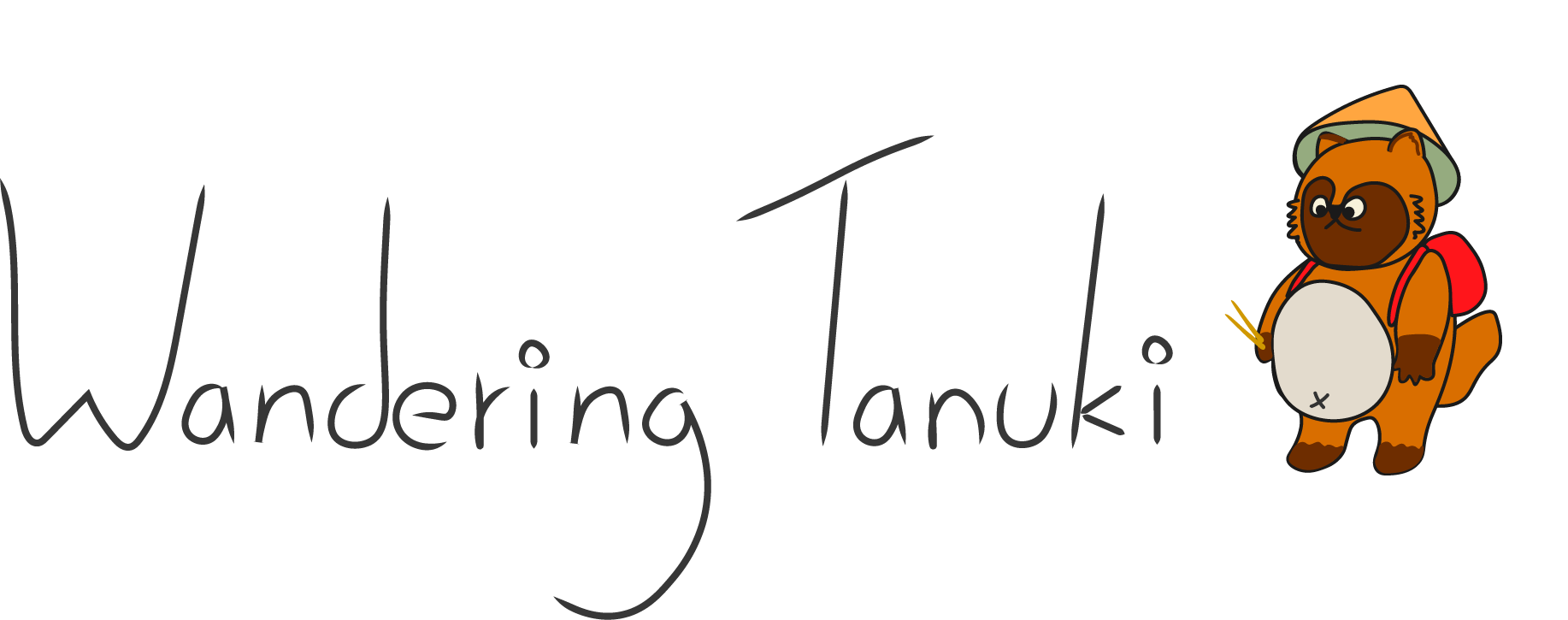How to enjoy Japanese onsen (hot springs)
If you find yourself in Japan, you’ll want to know how to enjoy Japanese onsen, or hot springs! Bathing is a big part of Japanese culture that has been around for thousands of years. Many tourist destinations in Japan feature onsen and you can also stay in inns which have their own.
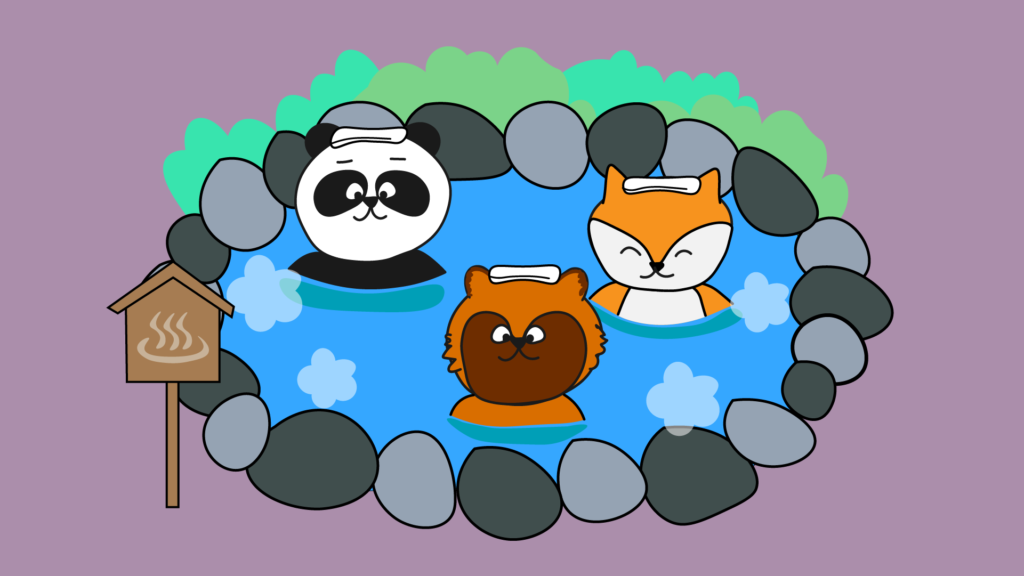
What is an onsen?
Onsen is a natural hot spring where water is heated geothermally. The warm water is used for bathing and contains different minerals.
In Japanese, it is written 温泉 (onsen), which means “warm spring”. You might also encounter the words ゆ or 湯, which means hot water and can refer to onsen.
The definition of onsen according to a Japanese law called 温泉法(onsen hou – hotspring law), is that the water temperature must be over 25 degrees celsius, and contain at least one type of mineral.
Other words similar to onsen:
You may have heard these two words which can be a similar concept to a Japanese onsen.
Sentou 銭湯
Sentou is a bathhouse that can look like an onsen. However, it uses water that is not naturally heated. This means that there isn’t the same mineral content as natural onsen. However, the bathing culture in these bathhouses are the same and the prices are usually cheaper than an onsen.
Sentou was first created as a way for Japanese people to enjoy baths, since many houses didn’t have one. These days, they are slowly decreasing in number because there isn’t as much of a need for them.
Ofuro お風呂
This is the word for a bath. It can mean the bath you take at home and also the bath you might take at an onsen or sentou. Most houses in Japan have very deep bathtubs so that people can enjoy this tradition at home.
Types of onsen water
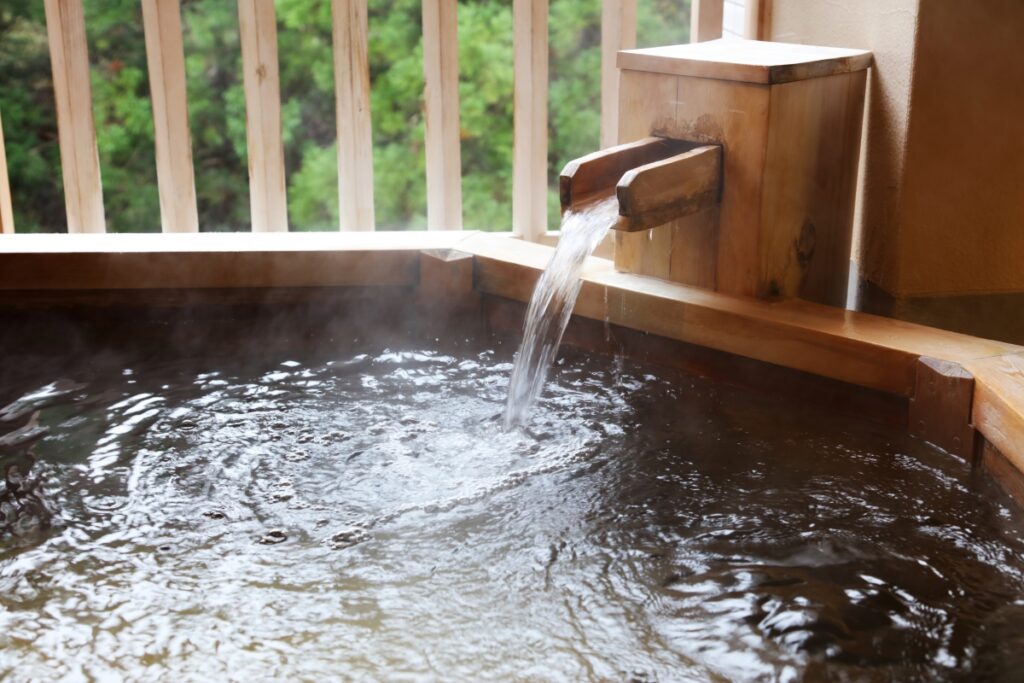
Onsen can have different water properties and health benefits. Here are all of the types of onsen that you can find in Japan!
Basic onsen – tanjun onsen
This onsen is mild without any defining characteristics. It is great for your skin and with higher pH levels (over 8.5) it has smoothing properties.
Chloride onsen – enkabutsu sen
In this type of onsen, there are chloride ions in the water. It can taste salty if you taste it. It’s great for cuts, improving circulation, and depression.
Bicarbonate onsen – tansansuisoen sen
This onsen water contains the negative ion, bicarbonate. Properties are similar to chloride onsen and can help with cuts, improving circulation, and dry skin.
Sulfate onsen – ryuusanen sen
In this water, it contains sulfate. Health benefits are similar to other onsen such as improving circulation, dry skin, and cuts.
Carbon dioxide onsen – nisankatanso sen
This can be described as a “sparkling” onsen. It will feel like you are bathing inside soda! It is not so common in Japan to find this type.
Iron onsen – gantetsu sen
As the name suggests, this water contains iron. The water can smell rusty and look reddish. It’s good for the skin, high blood pressure, menstruation problems.
Acidic onsen – sansei sei
This onsen is characterized by its acidity. It’s very rare in European countries, but can be found in many places around Japan. It’s great for eczema and diabetes.
Iodine onsen – ganyouso sen
The water in this onsen contains iodine. It may have a yellowish color in certain cases. Great for circulation and cuts.
Sulphur onsen – iou sen
In this onsen, the main characteristic is the sulphur. It may have the smell of rotten eggs. However, there are many health benefits such as for eczema and hives.
Radioactive onsen – houshanou sen
The name sounds scary, but this onsen contains weak amounts of radon. It’s good for rheumatism and arthritis.
What to bring to an onsen
Here’s what you might want to pack before going to an onsen. If you’re staying at an inn or hotel that has an onsen, then you probably don’t need to bring anything.
- Small change to use vending machines or coin lockers if they have one
- Small face towel and large bath towel (some will have rentals but you should check in advance)
- Change of underwear or clothes
- Toiletries (some onsen will also have ones you can use for free)
- Hair tie if your hair is long
- Plastic bags might be useful in case you want to put wet items
Step by step guide for onsen
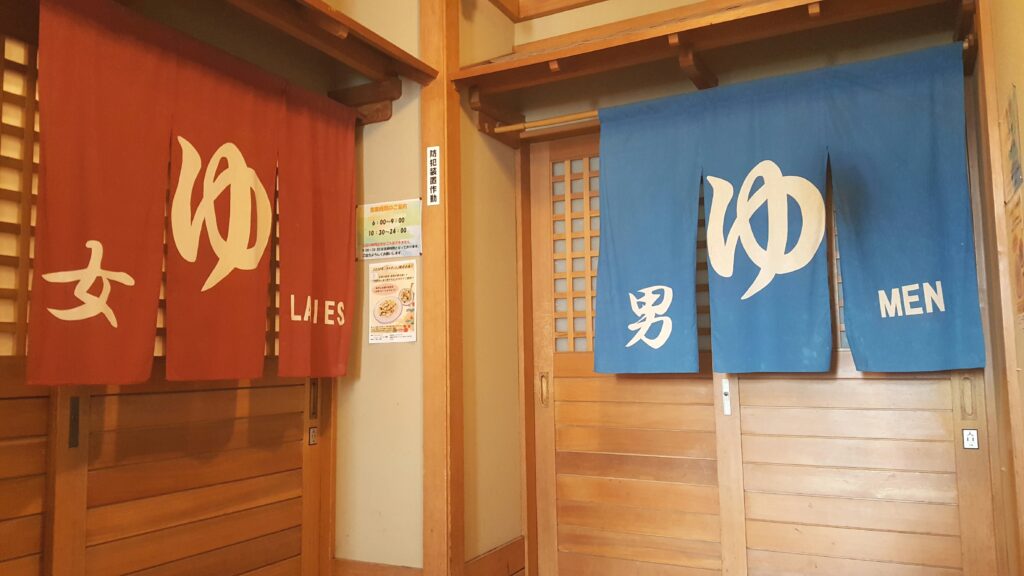
If it’s your first time going to a Japanese onsen, it might be a bit daunting! Here is a guide so you feel comfortable before going.
1. Take off your shoes at the designated area at the entrance. Sometimes shoes will be placed in a locker. Make sure you remember where you put the shoes.
2. Go to the cashier to pay for the onsen. This is where you’ll usually be handed a locker key. If the onsen is part of your hotel reservation, you don’t need to pay.
Note: Prices for onsen can range from a few hundred yen all the way to a couple thousand yen. This depends on the luxury level of the onsen, so make sure to check in advance.
3. Go to either the women’s side or men’s side. Women’s side will be marked with 女 and men’s side is marked as 男.
4. Take off your clothes in the locker room. You should be able to use the key to lock your items.
5. Go to the shower/bathing area. Take a clean small face towel with you. You can use this to hide your private parts if uncomfortable.
6. Rinse yourself in the shower area. Bring a stool to sit on and a bucket. Make sure to shower sitting down. The bucket can be used to hold your things such as toiletries.
7. Relax in the onsen! Some places have multiple baths. Be sure to look out for the rotenburo which is an open air bath (it’s screened so no one can look inside)! It feels nice and refreshing. When inside the onsen, you can put your towel on top of your head.
8. Take breaks as needed by going in and out of the water. Make sure to drink water.
9. When you’re done, take a shower in the shower area. Make sure to rinse the stool and the bucket at the end and put everything back.
10. Before going back to the locker room, wipe yourself with the small towel. Avoid dripping in the locker room.
11. Dry yourself with a bath towel and change back into your clothes.
12. At the end, you can have flavored milk from the vending machines! Some places also have massage chairs (used with coins).
Onsen rules:
These are the basic rules you should follow at an onsen. Just remember this is a public space so treat it with respect.
- Don’t put the towel into the water
- Don’t let hair soak into the onsen
- Don’t splash water everywhere when washing
- Make sure to rinse everything that you use such as the stool
- Refrain from strong scented shampoos and conditioners
- Don’t bring your phone inside as it can be uncomfortable to have a camera there.
- Don’t make very loud noises
- Don’t swim inside the onsen
- Make sure to shower sitting down
About bathing nude
At most Japanese onsen, you must bathe nude! This is for hygienic reasons and there’s nothing to be afraid of. Once you see people of all ages relaxing in the onsen, you’ll probably feel more comfortable.
Women and men bathe in separate areas and young children can go to either one with their parents. If you feel shy, you can also cover yourself with a small towel while you walk around to the different baths.
There are some places where you might be able to wear a swimsuit but these are not common. If you feel uncomfortable with bathing nude, you can check for places which are coed and ok for swimsuits.
Tattoos
People with tattoos are sometimes denied entry to a Japanese onsen. This is because tattoos have been associated with the yakuza and criminals for many years. Some onsen will allow people with smaller tattoos to cover it using a sticker.
I recommend checking the guidelines of the onsen if you have tattoos. Places which welcome lots of foreign tourists will likely have more relaxed rules about this.
Although it can be frustrating, it’s important to understand that it takes time to change traditional mentalities and perceptions about tattoos.
Recommended onsen in Japan
Atami onsen
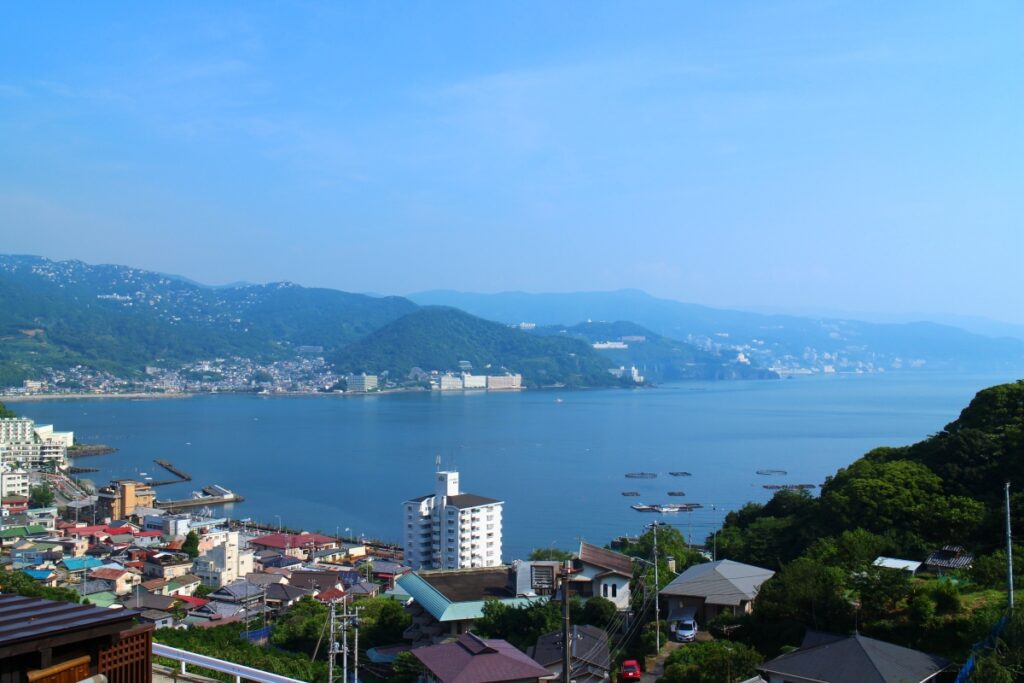
Atami is a coastal onsen town located in the Shizuoka prefecture. It’s relatively close to Tokyo (35 mins with bullet train) and day trips are possible! Although most onsen’s are inside inns, it’s also possible to go there just to bathe. Some onsens here feature beautiful views of the bay!
-Ocean Spa Fuua
A bit pricey but this is a spa complex where you can spend the whole day. It features a beautiful ocean view bath with natural onsen water. There are several baths, a space to relax, and they also offer buffet meals at an extra cost. Cost of entry for adults is about 2500 yen.
https://atamibayresort.com/fuua/
-Yuyado Mikan no Ki
This is a more traditional style onsen. It’s an inn but it is also friendly for day trippers. It features natural onsen water, lounge space, and a restaurant on site. Cost is 1200 yen without towel rentals.
-Yuyado ichibanchi
Another day trip friendly onsen spot in Atami is the yuyado ichibanchi. They also have their website in English which is foreigner friendly. They have two main baths an indoor and outdoor one. It’s also possible to rent the private bath which you can enjoy as a family or with your partner with an hourly cost. Fee for using the big public baths is 1500 yen for adults.
https://www.yuyado-ichibanchi.jp/
Beppu Onsen
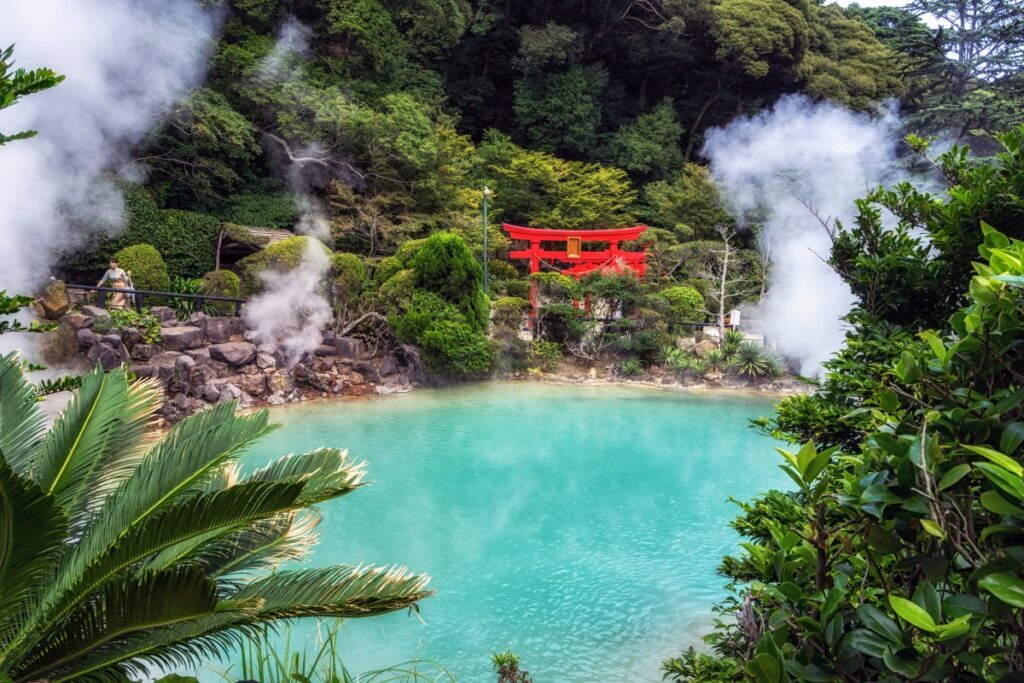
This is an onsen town located in the Oita prefecture. It produces some of the largest amounts of geothermal water in the world!
-Takegawara onsen
This is a public onsen which was first built in 1879. You can feel history and culture here while enjoying a nice bath. The entrance fee is only 100 yen!
https://www.city.beppu.oita.jp/seikatu/gaikokujinmuke/ei/detail7.html
-Tanayu
Boasting beautiful views in its outdoor bath, Tanayu is a great option when you’re in Beppu. There are several different types of baths. Cost on weekdays is 1200 yen and 1800 yen during weekends.
https://www.suginoi-hotel.com/english/
-Hyotan onsen
This is a very foreigner friendly onsen and tattoos are allowed. There price is also reasonable at around 740 yen. You can also dine there, where they will serve you food that is steamed using the geothermal energy!
https://www.hyotan-onsen.com/english/enjoy/plan03.html
Kusatsu onsen
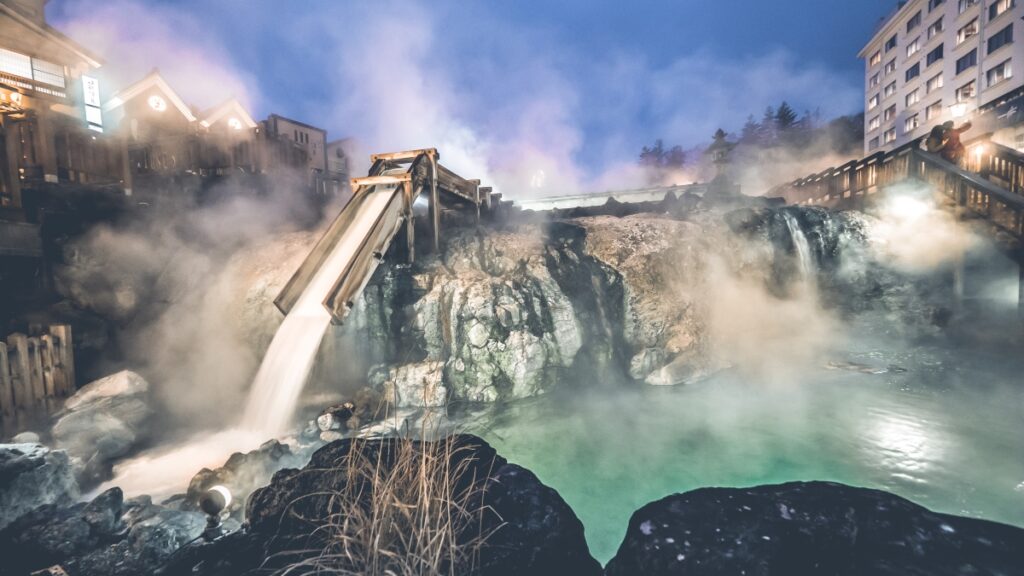
Located in Gunma prefecture, this is a great onsen destination. There are also other activities that you can enjoy throughout the year like skiing and hiking.
-Sainokawara
If you’re looking for one of the biggest outdoor baths, this one is not to be missed. These baths feature forest views and the size of the bath is 500 square meters. The price of admission is an affordable 500 yen.
-Gozanoyu
This onsen has a traditional aesthetic. They have recreated what baths looked like during the Edo and Meiji periods. Price is 600 yen for adults.
-Otakinoyu
This is a unique onsen experience where you can try awase-yu. They have baths at different temperatures so that you can gradually get used to the temperature of the water. Price is 900 yen for adults.
There are many more places than listed here where you can enjoy onsen! My recommendation is to look for onsen whenever you’re travelling somewhere. You’ll be bound to find one nearby.
I hope this article gives you insight on Japanese onsen culture and a guide on how to enjoy it! If you’re interested in more Japanese culture content check out my other articles like What does otaku mean in Japanese? or Ojigi or Bowing in Japan: Learn the Basics!
~Tanuki





